What is STEP?
The Supercritical Transformational Electric Power (STEP) Generation program constitutes a crosscut to facilitate the commercialization of Supercritical Carbon Dioxide (sCO2) technology. STEP is co-sponsored by the offices of Nuclear Energy (NE), Fossil Energy (FE) and Energy Efficiency and Renewable Energy (EERE).
The STEP mission is to reduce the technical barriers and risks to the commercialization of the sCO2 power cycle. The program aims to work with industry to develop and mature the technology at the pilot scale in order to facilitate commercialization.
Strategy
The crosscut’s Supercritical CO2 Technology Team is charged with using “a collaborative approach to develop and facilitate commercialization of sCO2 energy conversion technology.” This is achieved by drawing from the NE, FE, and EERE programs, to collaboratively pursue “the highest efficiencies offered by sCO2 Brayton Cycle technology.”
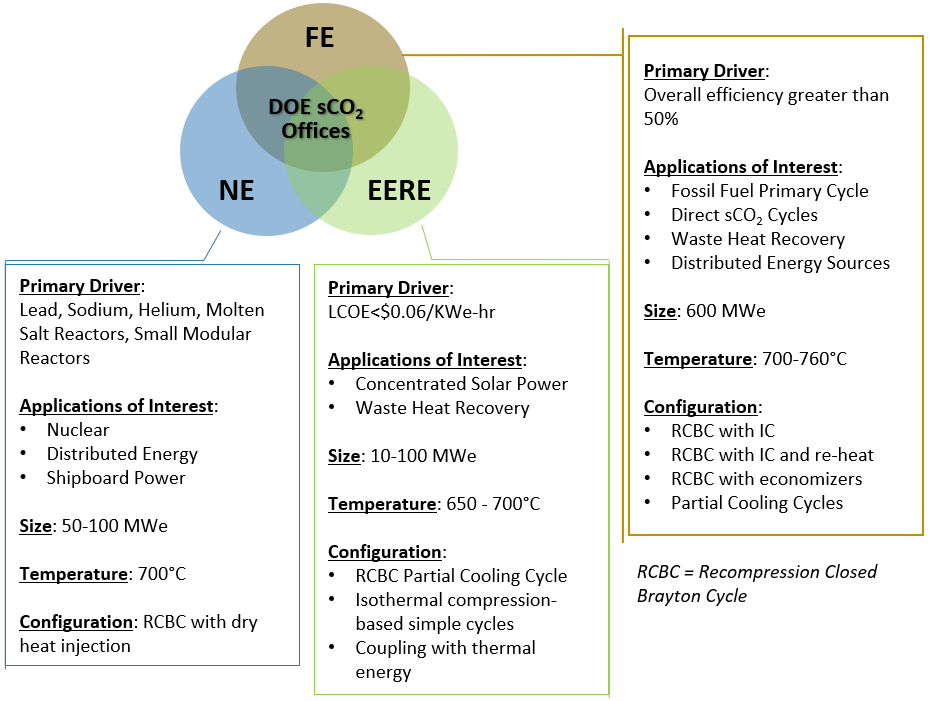
Advanced Nuclear Concepts for Reactors
STEP-NE
The primary goal of the STEP research and development program funded through the Office of Nuclear Energy (STEP-NE) is to commercialize sCO2 Brayton power cycles to make the technology available for advanced nuclear reactor applications. The Advanced Reactor Demonstration Program (ARDP) in NE aims to have a demonstration reactor by 2027 and commercialization of diverse designs by mid-2030’s. STEP-NE supports research and development (R&D) on sCO2 energy conversion components with the goal that they become commercial, off-the-shelf (COTS) products available for Advanced Reactors. Several of the new reactor designs are considering the sCO2 Brayton cycle for power conversion; thus, STEP-NE is simultaneously pursuing demonstration of grid readiness using sCO2 technologies.
Sandia’s Advanced Energy Conversion Team (The Brayton Team)
Sandia’s Advanced Energy Conversion Team supports the STEP-NE R&D goals through the strategic, incremental development and testing of components and subsystems to scale up to the temperatures and pressures required for advanced nuclear reactor applications. To do this, Sandia partners with industry to reduce technical risk and aid with commercial technology development. While STEP-NE’s target goal is to ready the technology for nuclear applications, supporting the development of sCO2 cycles in other applications is a critical part of the effort to expedite technology development. As such, Sandia continues to look for collaboration opportunities with concentrated solar, fossil, and thermal energy storage partners to further sCO2 Brayton cycle technology.
Sandia’s Advanced Energy Conversion Team mission states:
Sandia National Laboratories, in collaboration with government and industry partners, shall investigate the science, develop the test capabilities, and experimentally validate a grid compatible sCO2 Brayton power system to transition laboratory technologies to domestic commercial energy applications through the incremental development and testing of components and sub-systems relevant to sCO2 Brayton power cycles.
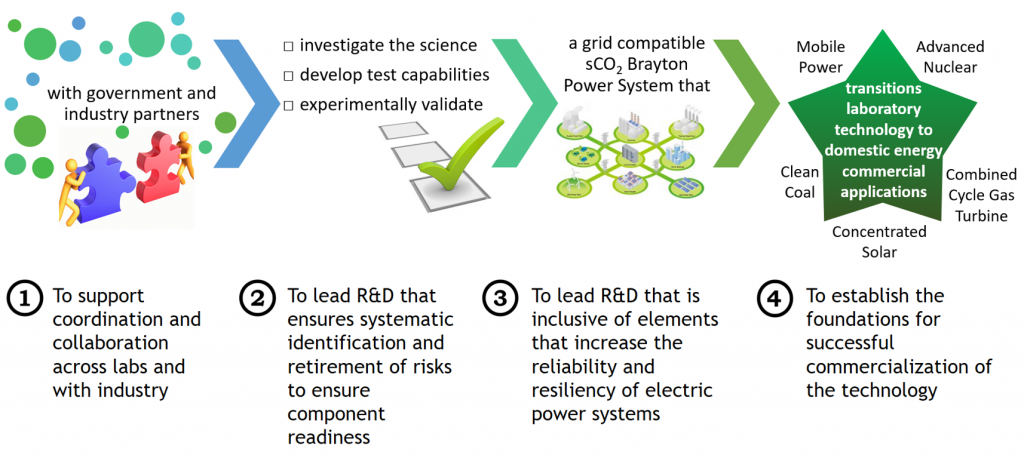
The technology roadmap developed to support this mission outlines three R&D lanes, as seen below:
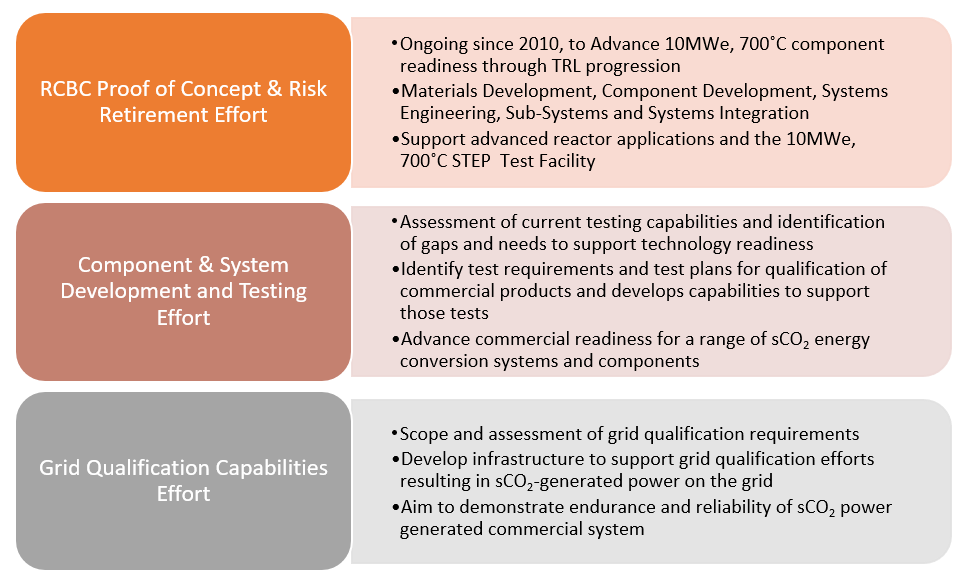
Sandia’s Brayton Development Platform Capabilities
A reconfigurable testing rig featuring 780 kW of heating power, 560 kW of heat rejection capacity, recuperators, and extensive state of the art data acquisition (DAQ) and controls. The system is rated for 538 °C (1000 °F) and 13.8 MPa (2000 psi) operation. The turbomachinery development platform is currently being used to test a sCO2 turbocompressor, and there are plans to re-configure to a simple cycle configuration followed by RCBC configuration using existing turbomachinery.
The bearings test rig has the capability to test up to 121°C (250 °F) and 11 MPa (1600 psi) to test a variety of bearing types. Most recently this test rig was used to experimentally validate the performance of gas foil bearings.
The seals test rig has the capability to test seals ranging from 1” to 8” in diameter at 700 °C (1292 °F) and 30.3 MPa (4595 psi).
Optical test platform to measure flow and density distributions of sCO2, including Particle Image Velocimetry (PIV).

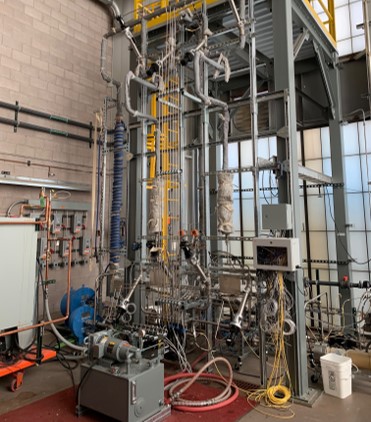
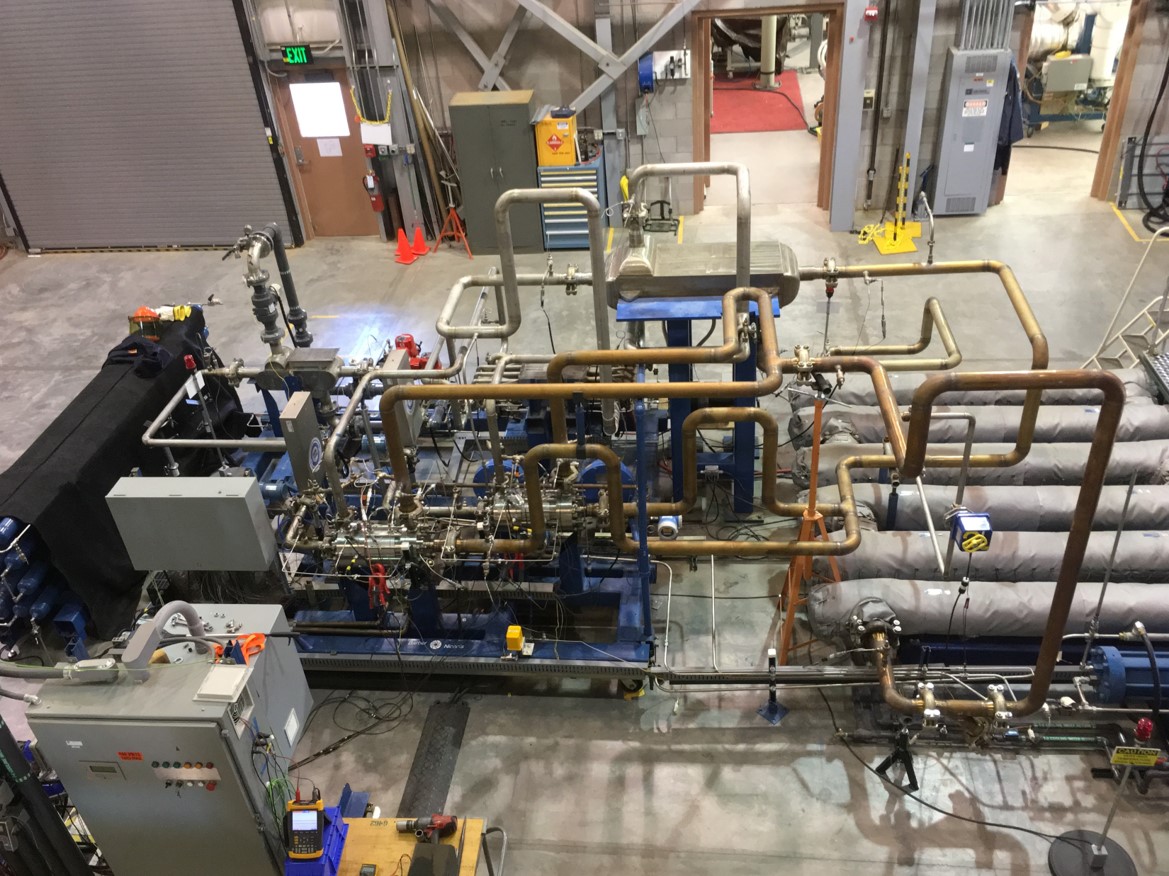

Contact
Rodney L Keith, PhD
Manager, Advanced Nuclear Concepts
rlkeith@sandia.gov